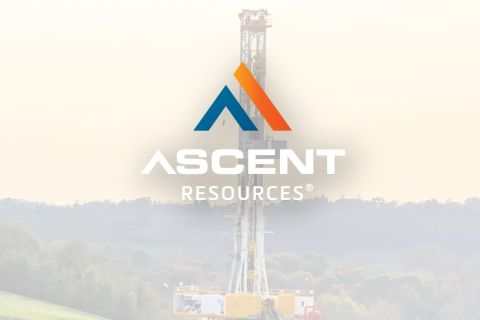Master limited partnerships (MLPs), like other publicly traded companies, are subject to many types of regulation. The regulatory guidance that matters most to MLPs, however, is the Internal Revenue Service’s (IRS) determination whether current and planned activities generate “qualifying income” under Section 7704 of the tax code.
Meeting the qualifying-income test every year is a prerequisite for operating under the MLP structure, and so MLPs are careful to ensure that the income from any planned activity will qualify. Often they do this by seeking a private letter ruling (PLR) from the IRS. The “natural resources” language of Section 7704 and the legislative history behind it provide a broad definition of the activities that qualify, and it is open to further interpretation.
The increase in the number of publicly traded MLPs during the past few years can be attributed mostly to the favorable climate for energy MLPs, but also in part to the expanding scope of natural resource activities that qualify for the MLP tax structure. While the vast majority of MLP companies remain in the traditional midstream energy sector, there is a growing number engaged in “oilfield services” that the IRS has looked favorably upon.
I define the oilfield services sector as activities vital to oil and gas exploration and production, ranging from drilling services to waste disposal to fluid transportation and storage. In many ways, the breadth and scope of these services reflect the changing nature of the oil and gas industry itself, namely the increasing importance of hydraulic fracturing and the general vitality of America’s energy economy.
Subsequently, oilfield service companies have sought consent from the IRS in the past few years to interpret the definition of qualifying income to include these additional natural resource services. The IRS has also ruled on the extent to which MLPs may process and change petroleum products such as natural gas and natural gas liquids (NGLs) and still fall within Section 7704. Rulings have allowed such processes as cracking, which induce chemical changes and change these basic petroleum products into different products.
The natural-resource exception
The recent number of PLR rulings is noteworthy, especially considering the IRS historically has issued new rulings at a fairly slow pace. In fact, from 1989 to 2006, only 31 PLRs were issued under the natural-resource exception in Section 7704. But beginning in 2007, that number has steadily grown, with last year seeing 18 new rulings. The trend has continued into 2013, with the expectation the IRS will have issued more PLRs during the past two years than it did between 1989 and 2006.
These recent PLR rulings reveal a number of energy-related activities not previously considered for MLP status. A sampling of these activities include: • Furnishing sand and water pipelines for fracing operations;
• Leasing of offshore oil and gas platforms (note that the platforms qualified as real property, another source of qualifying income);
• Loading, injecting additives and wholesale distribution of refined products;
• Production of olefins from NGLs via a cracking process and their transportation and storage; and
• Oilfield waste and fluids handling.
It is important to note that PLRs are specific to the energy-related company (i.e. taxpayer) requesting them and cannot be cited as precedent for the industry as a whole. However, they can be a useful indication to determine both the IRS’ rationale in a particular area and the types of activities being considered for publicly traded partnerships.
MLP Parity Act of 2013
In the spirit of looking ahead to predict the impact of Washington’s oversight over MLPs, a notable piece of legislation is being considered by Congress that deserves attention: The MLP Parity Act of 2013. The bill would expand the scope of activities defined in Section 7704, not incrementally as has been done in the PLRs, but in a broad sweep by allowing renewable energy companies to organize as MLPs.
Although the MLP Parity Act has received bipartisan co-sponsorship, it has yet to generate the type of support required to bring the bill to a vote—and the immediate prospects of that occurring remain dim.
If it received serious consideration in this Congress, it would probably be as part of tax reform, which most observers do not expect to occur this year or next.
However, the bill does show that Congress understands the critical role MLPs play in attracting private capital to domestic energy development—an investment in both our nation's security and continuing economic growth. This is another important sign that our political leaders are trying to align the nation’s regulatory approach to better reflect the changing energy landscape.
In short, the National Association of Publicly Traded Partnerships (NAPTP), the nation’s only trade association representing publicly traded limited partnerships, is pleased that the value of MLPs is being recognized by our nation’s leaders, and NAPTP will continue to follow the legislation with interest.
Recommended Reading
Chevron’s Tengiz Oil Field Operations Start Up in Kazakhstan
2024-04-25 - The final phase of Chevron’s project will produce about 260,000 bbl/d.
Rhino Taps Halliburton for Namibia Well Work
2024-04-24 - Halliburton’s deepwater integrated multi-well construction contract for a block in the Orange Basin starts later this year.
Halliburton’s Low-key M&A Strategy Remains Unchanged
2024-04-23 - Halliburton CEO Jeff Miller says expected organic growth generates more shareholder value than following consolidation trends, such as chief rival SLB’s plans to buy ChampionX.
Deepwater Roundup 2024: Americas
2024-04-23 - The final part of Hart Energy E&P’s Deepwater Roundup focuses on projects coming online in the Americas from 2023 until the end of the decade.
Ohio Utica’s Ascent Resources Credit Rep Rises on Production, Cash Flow
2024-04-23 - Ascent Resources received a positive outlook from Fitch Ratings as the company has grown into Ohio’s No. 1 gas and No. 2 Utica oil producer, according to state data.





